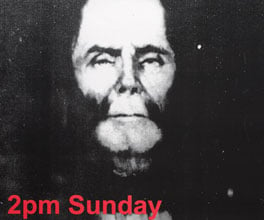The Buckley myth
The mystery behind William Buckley is, to this day, a source of fascination. However, because Buckley was illiterate and couldn't write about his experiences himself, journalists, missionaries and historians wrote for him.
The most well known account of Buckley's life is The Life and Adventures of William Buckley, by journalist John Morgan, who met Buckley in 1852. Although he had to construct Buckley's story from notes and fragments of conversations, Morgan wrote almost 200 pages. The book describes such events as when John Helder Wedge first named ‘Buckley Falls':
...Mr. Wedge took some sketches, and I pointed out to him some falls, near a place called Woorongo where I had caught a vast quantity of eels. Of these falls he also [drew] a view, calling them Buckley Falls out of compliment to me.
– William Buckley
Morgan, J 1852, The life and adventures of William Buckley, Archibald MacDougall, Hobart, Tas.
Today, many places have an indigneous name and a European name, reflecting the two cultures that have lived on and claimed the land.
Morgan's account is regarded as one of the most convincing and detailed versions of Buckley's story, although historian James Bonwick questions Morgan's use of creative licence, given that Buckley was a reclusive man who said very little.
George Langhorne's account of Buckley's life, on the other hand, was written in 1836 but not discovered until 1911, when it was published in The Age. It is regarded as one of the most accurate accounts, as it was written shortly after Buckley left the Wathaurung community, when events were clearest in Buckley's mind. The text is written in simple language and lacks any embellishment.
In addition, Langhorne's description of Buckley's state of mind contradicts almost all other accounts of Buckley's life:
He appeared to me always discontented and dissatisfied and I believe it would have been a great relief to him if the settlement had been abandoned and he left alone with his sable friends.
– George Langhorne
The Age, 'William Buckley', 29 July 1911.
Given the difficulty Buckley experienced when he left the Wathaurung community and returned to European life, this account rings true. However, because Buckley was unable to record his own experiences, we can never be sure of the accuracy of any account of his life.











